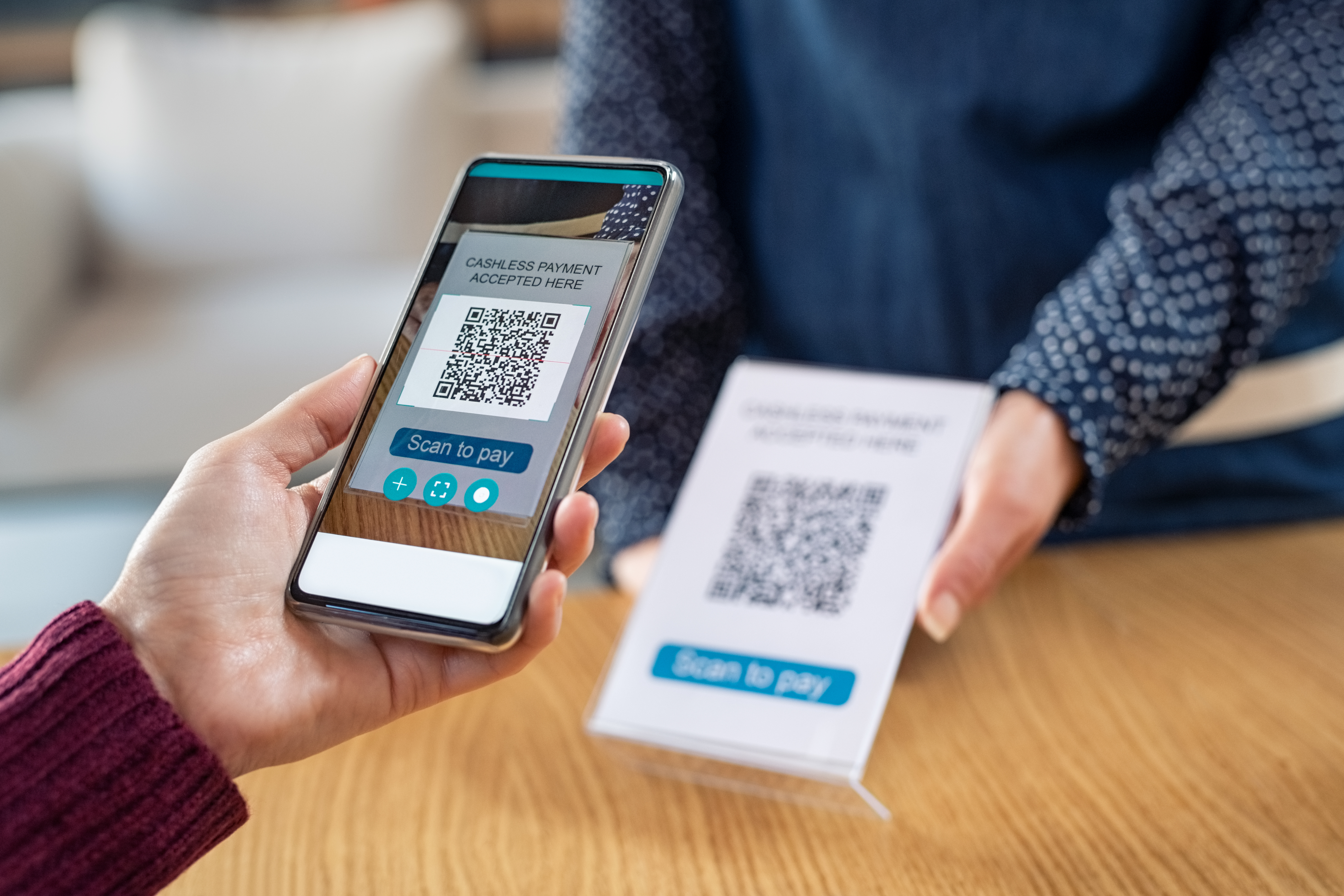When it comes to driving innovation, today’s fintech environment embraces unprecedented opportunities. Fintech has revolutionized the financial services sector by introducing new ways for people and businesses to access and manage their money.
Being aware of the tools and technologies, or possessing an adept R&D software team capable of developing new products or improving existing ones, enables fintech companies to enhance operational efficiency, provide tailored experiences, tackle security obstacles, and accommodate the distinct business and customers’ requirements. In essence, having knowledge of the appropriate technological benefits empowers you to innovate with confidence.
In the wake of Money2020, one of the most reputable fintech events in Europe, our Zitec team had the opportunity to be in the middle of the event and discuss ideas on what’s next in payments, fintech, and financial services. Its thought-provoking agenda inspired us to weigh the latest innovative technology fintech businesses need to take into account in order to stay up-to-date with tech progress, satisfy consumers’ needs, and gain a competitive edge. From world-class insights, benefits, fintech developments, improvements, and strategies, we connected all the dots regarding what shapes the future of fintech and listed all in the text below.
Technological progress and innovation in fintech development
Although technological acceleration has always been a constant up-rising trend in the fintech market, there is still opportunity for advancement. As fintechs have stretched their creative faculties and inspired the development of improved financial technology services, we will further dive into the most current innovations in fintech.
Open Banking and API integration
One of the cornerstones of the fintech industry is Open Banking, which transforms the financial sector by enabling customers to grant permission to share their financial information securely with multiple providers, all done on a single platform. Basically, Open Banking revolutionizes people’s interactions with financial institutions.
This financial technology enables third-parties, such as fintech companies and financial aggregators, to use banking infrastructure through APIs (Application Programming Interfaces). Application Programming Interfaces are a set of protocols, routines, and tools essential to Open Banking as API integration allows safe communication and data sharing, unprecedented transparency, and control over financial information exchange, even with non-traditional financial institutions.
Together, these two technologies are considered the backbone of the financial services industry. Through Open Banking, the possibilities for banks, payment companies, and fintech firms are limitless. In comparison to traditional banking systems, Open Banking and API connectivity bring several benefits and enable competitive edge and innovation in the financial industry:
Benefits for customers
- integration between banks and other apps that offers access to a broader range of services like instant payments
- user authentication and convenience to swiftly switch between accounts
- control and flexibility over finances
- open APIs that allow in-app shopping, marketing, and other services
- one single platform with a wider range of financial products and services
- control over third-party access to data
- better competitive services at lower prices
Benefits for financial institutions
- digital transformation for banks via the most innovative and user-friendly solutions, as well as continuous improvements
- operational efficiency by removing redundant banking procedures and allowing fast data exchange between apps
- various service development such as virtual expense management and integrated accounting & tax management
- ease of customer acquisition and analytics
- access to new markets through partnerships with other companies operating in different regions, without the need to establish physical branches
- controlled access to customers' data, which allows better and personalized products and services
- access only for authorized third-party providers, which promotes compliance with financial regulations and adherence to PSD2 data-sharing and security standards
- cost reduction for banks and financial institutions via process automation
Open Banking APIs drive new collaborations between the banking sector and innovative technology companies. Besides prioritized transparency and flexibility, Open Banking APIs promise new opportunities for unlocking value, increasing financial efficiency, and creating a more inclusive banking experience.
Open Finance
While Open Banking has opened doors for account information (AIS) and payment initiation (PIS) service providers to broader secure data sharing, Open Finance aims to catalyze the benefits of Open Banking and create more opportunities and financial products and services, not just for banking.
With Open Banking, customers gain access to new financial products and services from regulated third-party providers. Namely, banks that built APIs following PSD2 standards and third-party providers who got licenses to connect to them. On the other hand, through Open Finance, third-party developers can build applications and services for a larger range of financial institutions, including mortgages, savings, pensions, insurance, and consumer credit.
Benefits for customers
- consumers’ control and visibility over their financial data, which allows them to improve the management of their personal finances (e.g. how much direct debit users pay on their subscriptions)
- comprehensive account aggregation that brings together multiple customer accounts into one interface
- direct payments without the need to enter the credit or debit card details each time
- wider integration into non-financial industries, such as healthcare and governance
Benefits for financial institutions
- access a wider variety of customer data from various accounts (e.g. savings, pensions, investments, insurance, or mortgage)
- personalized financial products and services based on the gathered customer data
- development of automatic money transfer capabilities, which allow for seamless financial experiences between different accounts
- better fraud and risk mitigation through automated transfers that reduce the potential for human error, and through the adherence to strict security standards and data protection protocols
- new business models
- collaboration between businesses from different sectors and creation of new offerings for customers
- entrance to the financial consumer ecosystem with services that will attract more deposits, more lenders, and less risky customers
Open Finance allows financial institutions to build trust with their customers and provide them with a more holistic financial experience. Embracing Open Finance positions financial institutions at the forefront of the industry, ready to thrive in an era of interconnected finance and limitless opportunities.
Embedded Finance
The term “Embedded Finance” describes a new trend in financial technologies that integrates financial services (e.g., loans, insurance, debit cards, payment processing, investment instruments) into non-financial platforms, non-regulated entities, or businesses without a financial infrastructure.
Embedded Finance encompasses four main categories: embedded payments, embedded banking, embedded lending, and embedded insurance. However, via the Embedded Finance platforms, you can bypass technical infrastructure by providing “Plug and Play” functionality using APIs. Moreover, through these APIs, non-financial businesses partner with fintechs, which allows them to offer various financial services directly on their own website.
Benefits for consumers
- convenient access to financial services like online payment options (debit or credit) - all done inside an existing app or platform
- customized financial services, like Buy Now Pay Later or personal loan options at checkout, by leveraging alternative credit assessment methods that extend financing to individuals with limited access to traditional banking services
- increased convenience and savings, like zero-interest point-of-sale loans, or rewards for using a brand’s eCommerce app
Benefits for financial institutions
- integration of financial products into digital interfaces that users interact with (e.g. customer loyalty apps, digital wallets, accounting software, shopping-cart platforms)
- no need to redirect finances to traditional financial institutions
- streamlined approach to payment and finance operations
- competitive advantage and customer trustworthiness
- easy access to an appropriate customer base via business collaborations and embedding offerings on relevant websites and apps
- access to financial and non-financial data such as shopping preferences, frequency of usage of specific services
Buy Now Pay Later (BNPL) is the fastest-growing embedded finance model, and it allows customers to purchase items and split out their payments afterwards, over a certain period of time. Consumers find it quite simple to get authorized for BNPL loans when compared to regular credit cards and personal loans. The key benefit is that although the terms and conditions of BNPL programs vary, they typically provide short-term loans with fixed payments and no interest. BNPL can be a beneficial choice for buyers when inflation is high and interest rates rise.
Modern payments
The payments sector has seen significant upheaval, spurred by changes in customer preferences, legislative developments, and technology breakthroughs. The topic of modernizing payment infrastructures is relevant to everyone who has ever made or accepted cashless payments, including banks, payment service providers, merchants, and ultimately consumers.
But, while many organizations continue to employ legacy payment systems, given the increase in electronic financial transactions or the ongoing industry advancements, it is now inevitable that you incorporate modern features that are both essential for and demanded by the contemporary audience.
Digital wallets, smartphone payments, and contactless transactions are just a few examples of the convenient and safe financial transactions made possible by modern payment systems. Changing to these systems enables you to match customer expectations, boost sales, maintain competition in any market, or offer convenience, improved data security, and accessibility. We will further dive into some of the most current payment methods:
1. Cross-border payments
Payments made across international borders are referred to as cross-border payments. They are crucial for companies and people who want to access international markets, diversify their sources of income, or support family and friends who are living overseas.
Benefits
- competitive exchange rates, transparent pricing, and faster delivery times
- possibility to offer real-time payments, namely sending or receiving money instantly across borders
- customers and new markets reach
- lower tax rates, regulatory exemptions, or credits in different countries or regions
- safer transactions with anti-money laundering (AML) and counter-terrorism financing (CTF) regulations
- transactions and alerts monitoring when sending or receiving cross-border payments
2. Mobile payments
Mobile payments are becoming more and more popular in the fintech industry since they are quick, affordable services, and adaptable to the market changes and consumer demands. A mobile POS, smartphone, or any other device set-up with a credit card payment app that collects scan-to-pay or tap-to-pay NFC mobile payments can accept card or mobile wallet payments from practically anywhere.
Benefits
- visibility of digital receipts, sales reports and information, payment records, inventory updates etc.
- a portable solution to cut down on in-store queues
- rapid remote electronic payments processing and improved cash flow, as customer funds are transferred to your account either instantly or in a few days
- a wider variety of online and off-line payment options, such as contactless payments on the go
- fast integration with loyalty programs
- insights into actionable data, customers’ purchasing behavior and product preferences, or overall customer journey funnel
- mPOS systems offer frictionless payments such as contactless (or EMV chip) credit cards, digital wallets or QR code payments
3. Digital wallets
One of the earliest inventions to bring the ease of digital transactions is the digital wallet system. Digital wallets are convenient because they store anything a user would carry in a traditional wallet - money, bank accounts information, credit cards, shopping loyalty cards, IDs, driving licenses etc.
Benefits
- a centralized platform for managing financial activities (e.g. transaction history, expense tracking, budgeting tools)
- secure storage of payment card information
- no need to carry physical cards, enter card details repeatedly, or remember multiple passwords
- instant access to funds and faster and convenient financial transactions
- advanced encryption and tokenization technologies, as digital wallets generate unique tokens for each transaction to protect sensitive payment data
- reduced risk of fraud and unauthorized access due to biometric authentication methods (e.g. fingerprint or facial recognition)
4. Instant payments
Instant payments are credit transfers that make money available in the payee’s account. This process is complete within ten seconds of receiving a payment order; thus differing from real-time payments systems, which typically operate 24/7 but process the payments in a few hours.
Benefits
- several payments methods or channels combined in one platform (e.g. request to pay, fraud and liquidity management)
- more cost-effective and seamless payments
- the transaction doesn’t require the intervention of intermediary banks
- instant payments enable instant cross-border payments
- no friction as payments are executed in seconds
Cybersecurity improvements
Fintech companies acquire and maintain sensitive personal and financial data, making them attractive targets for identity and asset theft. While cybersecurity threats and attacks have been evolving, fintech companies operate in an environment that is highly regulated. Therefore, there are often severe legal and financial repercussions for security breaches or other incidents.
This is why you must constantly revamp your data security best practices and cybersecurity posture in order to safeguard users’ funds. Yet, any fintech organization needs to balance innovation and risk management in order to stay ahead of new threats and adhere to legal requirements. If you are aware of the necessary app innovative features that must be upgraded, you can stay on top of the curve and reach many advantages:
- verification of online identities and stronger security improvements with KYC and AML procedures
- possibility for users to share only the information required for a specific transaction, while other data remains safely on the server
- cybersecurity measures and periodical infrastructure verifications, both on mobile and website, can lead to customer trust and a widespread adoption of fintech apps
- strong authentication and authorization methods (e.g. two-factor authentication, biometric authentication) decrease illegal access to sensitive assets
- encryption and tokenization protect data in transit and at rest
- avoidance of legal and financial fines for security breaches and meeting regulatory requirements
- improved reputation of financial organizations and customer loyalty
Fintech in the long run
As technology shapes the finance status-quo, the growth in fintech innovation highlights how fintech is only in the initial stages of bridging the gap between customers and financial services. From mobile banking to digital wallets, fintech has increased the accessibility, affordability, and convenience of financial services like never before.
However, working with a partner that deploys fintech software and services can help you scale quickly as you can innovate with confidence. This can lead your business to gain speed-to-market advantages, enhance security and compliance, and offer powerful customer experiences.
Zitec's operationally-ready R&D team has built custom financial products for 20 years. Digital banking solutions, online payment systems and digital wallet development, security and risk management services - these are just a few of the services our team can provide. Contact us and we can deliver on-time and on-target projects that generate a clear ROI.









.webp)
